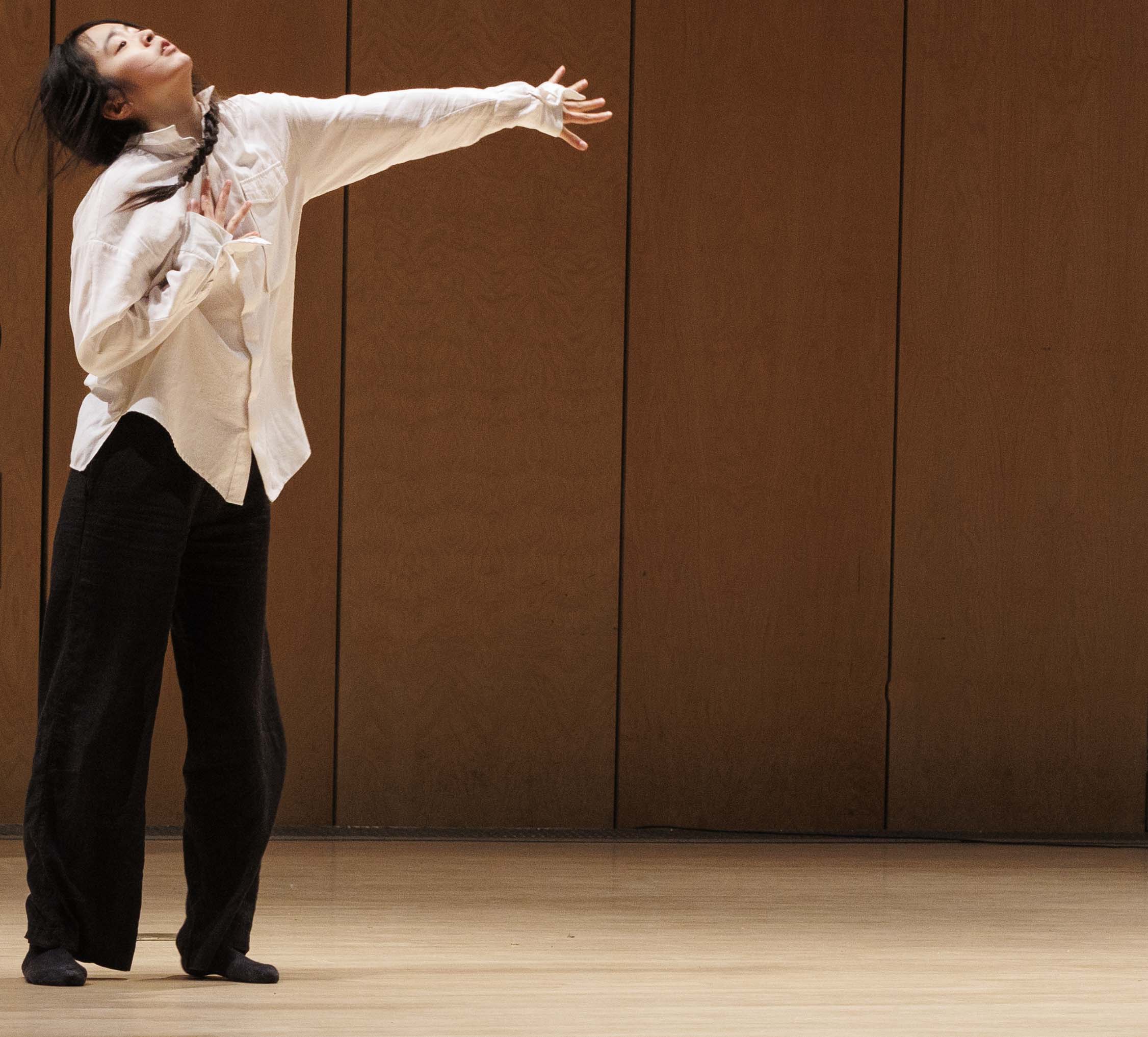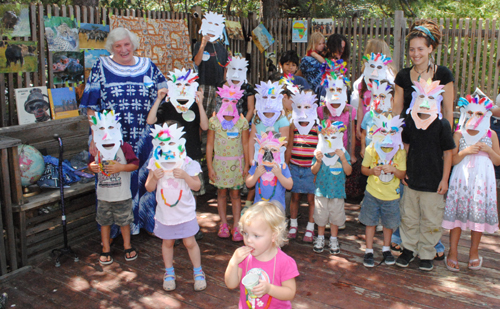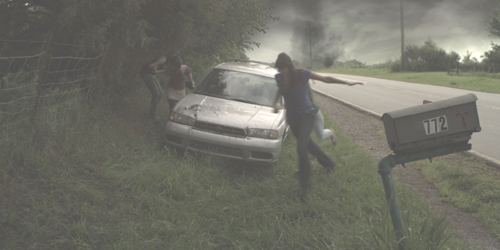Hopes were high this past weekend at the Lowman Concert Hall on the Idyllwild Arts Academy campus; with the continued warm weather and clear sunshine on the Hill, a larger than usual turnout was also expected, and as it happened, the situation materialized according to the anticipatory heights.
The Saturday evening orchestral concert, ably supervised by Conductor and Music Director Dr. Daniel Bassin, offered a program featuring some unjustly neglected works of the Romantic tradition in German music, and bolstered by both students and guest artists in the orchestra and audience, the eventual pleasant result was a guarantee.
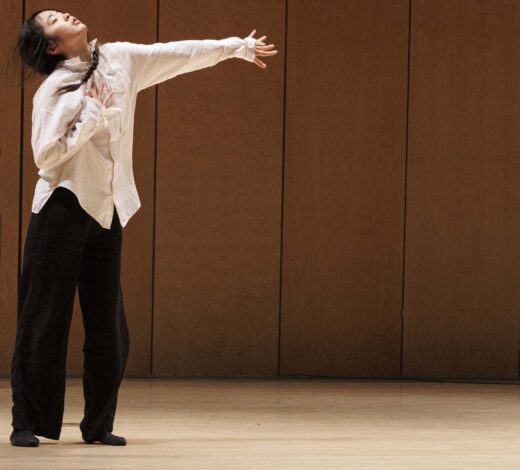
PHOTO BY PETER SZABADI
Leading off with a flourish, and with respect to the distaff side of the period’s compositorial output, the “Concert Overture #2 in D Major” of Emilie Mayer (from the middle years of the 19th century), Dr. Bassin’s finely-tuned forces evinced a powerful, if somewhat derivative, opening statement. The work seems to be a skillful potpourri of Rossiniana (quasi-operatic themes all in a row) and a Schumannesque/Mendelssohnian midsummer-night fantasy, blending lush string sound with a forceful enough brass foundation.
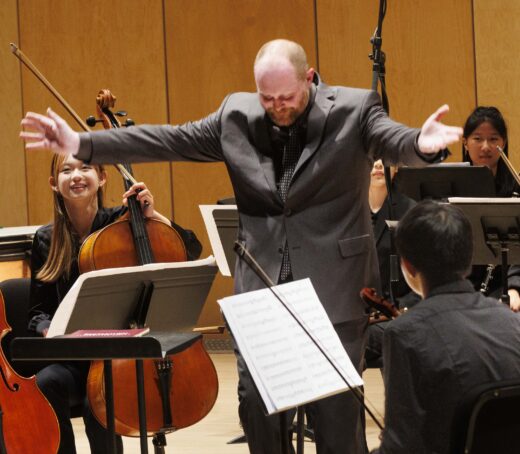
PHOTO BY PETER SZABADI
Following in those encouraging footsteps, last season’s concert soloist winner Robert Nael essayed the opening movement of Carl Maria von Weber’s “Concerto for Bassoon & Orchestra in F Major” with an already demonstrated mastery of his chosen instrument. Weber’s flowing melodic impetus, as well as his typical virtuosic roulades (in both high and low bassoon registers) were most effectively displayed, and the auditors (particularly the large student contingent) responded most appreciatively.
After intermission, the orchestra returned to put forth a somewhat overlooked work of incipient German Romanticism, the “4th Symphony” of Ludwig van Beethoven. Due to its position in between two notable symphonic monuments (the “Eroica” and the “5th Symphony”), the work is generally passed over to a lesser light in the orchestral milieu, for conductors and performers.
On this occasion, however, expert handling of the forces at hand was patently in evidence from the start; the opening Adagio section (in the B-flat tonic minor key) was transformed into the main Allegro first movement (in the major mode) most effectively. Beethoven’s every detail, from punctilious punctuation to wind, brass and string sectional highlighting, was observed to the letter more often than not throughout the four movements. Though Dr. Bassin’s tempos seemed to be a bit faster than the composer intended — the 2nd movement proved a rather relaxed Andante instead of the indicated Adagio, the contrasting sections of the Scherzo and Trio were most convincingly presented, and the final movement’s propulsion of the strings at the required minimal volume (thanks again to Lowman Hall’s acoustic propensities) brought out the remainder of the orchestral circumstantial pomp and power, and the concluding bursts of the coda transformed the audience’s reactions into an enthusiasm which was as ecstatic (if not necessarily Romantic) as the proceedings.
The following Sunday afternoon in the same location, selected student performers presented a mixed program of instrumental high spots from their repertoire. Classical, jazz and choreographic works were on display and, once more, a full complement of student spectators was on hand.
The program began with a combo of tenor saxophone, piano, bass and drums essaying Chick Corea’s “Humpty Dumpty” (which to this listener, proved more Earwicker than Egg-Man, particularly when drummer Richi Rubio tried balancing one drumstick on his nose.)
For the second jazz/pop feature, the duo guitar/vocalists Akash Pandey and Khush Ahuja’s rendition of Bill Withers’ “Just the Two of Us” was plainly and simply put forth, to an enthusiastic crowd appreciation. In between those offerings, pianist Katerina Sommers’ playing of the 1st movement from Robert Schumann’s “Grand Sonata in G Minor, Opus 22” was a study in control of the composer’s wild contrasts in tempo and volume.
Similarly, violinist Rentso Stavrev’s virtuosic rendering of Niccolo Paganini’s “Caprice #5 in A Minor” was a striking example of talented and convincing dexterity.
The hero of the previous night, bassoonist Robert Nael, returned to the stage with his instrumental colleague Avery Mbuka, in an all-too-brief exposition of the opening movement of the “Sonata for 2 Bassoons, Opus 4 #1” of Joseph Bodin de Boismortier, once more dispersing (however curtly) his technical prowess.
Also in the realm of technique, clarinetist Louis Chen demonstrated his facility with room to spare in the first two movements of Francis Poulenc’s “Clarinet Sonata” of 1962; this late work, containing overtones of Prokofiev and Benny Goodman (to whom the sonata is dedicated) proved a valuable exercise for the soloist in both brooding intensity and solemn meditation. Further evidentiary talents were present in Zeyu Wang’s execution of Frederic Chopin’s “Ballade #4 in F Minor” (the so-called pianistic retelling of a Lithuanian legend); the contrasting sections here were admirably brought out, in particular the metrical shiftings such as occur in most of Chopin’s later works, leading to the premature audience applause before Ms. Wang’s concluding flourishes.
The duo presentation of Sergei Rachmaninov’s “Vocalise” (in the composer’s arrangement for cello and piano) by Yu-Hsuan Tu and the afore-mentioned Ms. Sommers provided a genial introduction to their follow-up work, “The Combination of Music and Dance – Light” (music by Ms. Tu, and improvisational dancing by Cecilia Xie.) The piece inspired emotive responses by the dancer that verged on Olympic-style acrobatic motions, plainly evinced from the quasi-minimalist cello/piano score.
And for the somewhat understated final work of the afternoon, Beethoven’s initial “Allegro con brio” of the “String Quartet, Opus 18 #1” was played by the complement of Leo Yen and Abby Regua (first and second violins), Seoyeon Bay (viola) and Michelle Fan (cello.) This example of the composer’s early “unbuttoned” Haydnesque style (it was dedicated to Karl Amenda, who introduced Beethoven to Haydn) came about in this instance with the requisite “brio” that introductory movements should have, and as a no less graceful conclusion to the entire presentation was undertaken by all four players. And for a further instance of episodic “romanticism,” all of the afternoon’s performers were brought to the stage to a most enthusiastic disporting of audience approval.



